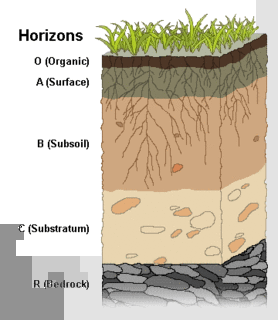 W
WCrotonylidene diurea (CDU) is an organic compound formed by the condensation of crotonaldehyde with two equivalents of urea. It is a white, water-soluble solid. CDU is a component of some controlled-release fertilizers.
 W
WA fertilizer or fertiliser is any material of natural or synthetic origin that is applied to soil or to plant tissues to supply plant nutrients. Fertilizers may be distinct from liming materials or other non-nutrient soil amendments. Many sources of fertilizer exist, both natural and industrially produced. For most modern agricultural practices, fertilization focuses on three main macro nutrients: Nitrogen (N), Phosphorus (P), and Potassium (K) with occasional addition of supplements like rock dust for micronutrients. Farmers apply these fertilizers in a variety of ways: through dry or pelletized or liquid application processes, using large agricultural equipment or hand-tool methods.
 W
WMethylene diurea (MDU) is the organic compound with the formula CH2(NHC(O)NH2)2. It is a white water-soluble solid. The compound is formed by the condensation of formaldehyde with urea. Methylene diurea is the substrate for the enzyme methylenediurea deaminase.
 W
WThe history of fertilizer has largely shaped political, economic, and social circumstances in their traditional uses. Subsequently, there has been a radical reshaping of environmental conditions following the development of chemically synthesized fertilizers.
 W
WA controlled-release fertiliser (CRF) is a granulated fertiliser that releases nutrients gradually into the soil. Controlled-release fertilizer is also known as controlled-availability fertilizer, delayed-release fertilizer, metered-release fertilizer, or slow-acting fertilizer. Usually CRF refers to nitrogen-based fertilizers. Slow- and controlled-release involve only 0.15% of the fertilizer market (1995).
 W
WFertigation is the injection of fertilizers, used for soil amendments, water amendments and other water-soluble products into an irrigation system.
 W
WFertilaid as Fertilizer Fertilaid, was one of the first organically certified fertilizers acknowledged by the California Certification of Organics, in 1979. A nationwide process for certification did not begin to exist in the United States until 1990 per the National Organic Food Act. Previous to that, Fertilaid was awarded, in January 1954, its first Patent Office Citation.
 W
WFertilizer burn is leaf scorch resulting from over-fertilization, usually referring to excess nitrogen salts.
 W
WThe Frank–Caro process, also called cyanamide process, is the nitrogen fixation reaction of calcium carbide with nitrogen gas in a reactor vessel at about 1,000°C. The reaction is exothermic and self-sustaining once the reaction temperature is reached. Originally the reaction took place in large steel cylinders with an electrical resistance element providing initial heat to start the reaction. Modern production uses rotating ovens. The synthesis produces a solid mixture of calcium cyanamide (CaCN2), also known as nitrolime, and carbon.CaC2 + N2 → CaCN2 + C
 W
WIsobutylidenediurea (abbreviated IBDU) is an organic compound with the formula (CH3)2CHCH{NHC(O)NH2}2. It is a derivative of urea (OC(NH2)2), which itself is highly soluble in water, but IBDU is not. It functions as a controlled-release fertiliser owing to its low solubility, which limits the rate of its hydrolysis to urea, which is a fast-acting fertiliser.
 W
WMilorganite is a brand of biosolids fertilizer produced by treating sewage sludge by the Milwaukee Metropolitan Sewerage District. The term is a portmanteau of the term Milwaukee Organic Nitrogen. The sewer system of the District collects municipal wastewater from the Milwaukee metropolitan area. After settling, wastewater is treated with microbes to break down organic matter at the Jones Island sewage treatment plant in Milwaukee, Wisconsin. The byproduct sewage sludge is produced. This is heat-dried with hot air in the range of 900–1,200 °F (482–649 °C), which heats the sewage sludge to at least 176 °F (80 °C) to kill pathogens. The material is then pelletized and marketed throughout the United States under the name Milorganite. The result is recycling of the nitrogen and phosphorus from the waste-stream as fertilizer. The treated wastewater is discharged to Lake Michigan.
 W
WN-(n-butyl)thiophosphoric triamide (NBPT) is the organophosphorus compound with the formula SP(NH2)2(NHC4H9). A white solid, NBPT is an "enhanced efficiency fertilizer", intended to limit the release of nitrogen-containing gases following fertilization. Regarding its chemical structure, the molecule features tetrahedral phosphorus bonded to sulfur and three amido groups.
 W
WNutrient pollution, a form of water pollution, refers to contamination by excessive inputs of nutrients. It is a primary cause of eutrophication of surface waters, in which excess nutrients, usually nitrogen or phosphorus, stimulate algal growth. Sources of nutrient pollution include surface runoff from farm fields and pastures, discharges from septic tanks and feedlots, and emissions from combustion. Raw sewage is a large contributor to cultural eutrophication since sewage is high in nutrients. Releasing raw sewage into a large water body is referred to as sewage dumping, and still occurs all over the world. Excess reactive nitrogen compounds in the environment are associated with many large-scale environmental concerns. These include eutrophication of surface waters, harmful algal blooms, hypoxia, acid rain, nitrogen saturation in forests, and climate change.
 W
WPhenyl phosphorodiamidate is an organophosphorus compound with the formula C6H5OP(O)(NH2)2. A white solid, it is used as an inhibitor of urease, an enzyme that accelerates the hydrolysis of urea. In this way, phenyl phosphorodiamidate enhances the effectiveness of urea-based fertilizers. It is a component of the technology of controlled release fertilizers.
 W
WPotash includes various mined and manufactured salts that contain potassium in water-soluble form. The name derives from pot ash, which refers to plant ashes or wood ash soaked in water in a pot, which was the primary means of manufacturing the product before the Industrial Era. The word "potassium" is derived from "potash".
 W
WSoil fertility refers to the ability of soil to sustain agricultural plant growth, i.e. to provide plant habitat and result in sustained and consistent yields of high quality. A fertile soil has the following properties:The ability to supply essential plant nutrients and water in adequate amounts and proportions for plant growth and reproduction; and The absence of toxic substances which may inhibit plant growth.